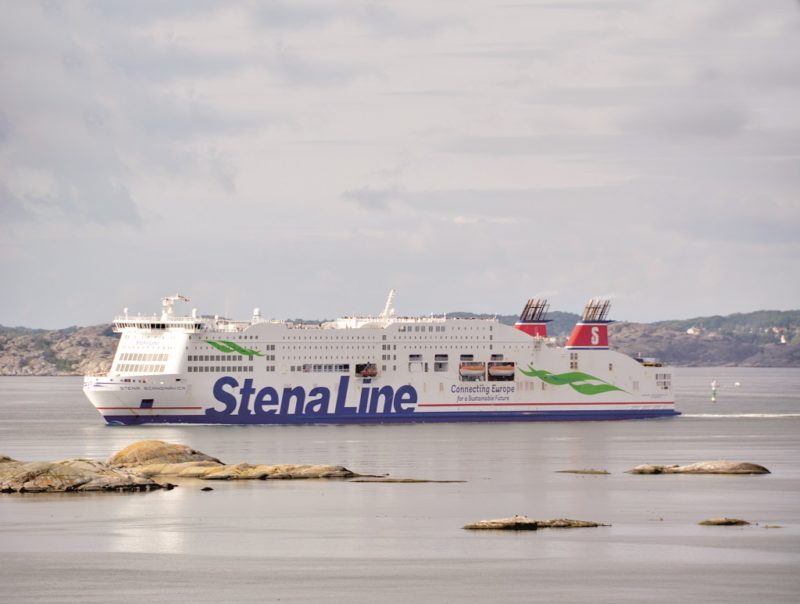
Gothenburg is an attractive and popular city for international and national tourists as well as cruise ship passengers in South West Sweden, and is the capital of Vastra Gotaland County in the large Goteborg and Bohus Province at the mouth of the river Alv Gota on the Kattegat. It is the second biggest city in Sweden after Stockholm, and has much commerce, industry and good ferry links around the Baltic as well as a university. The Port of Gothenburg has large imports of oil, gas and new forms of energy for three refineries with deep water tanker terminals. Shipbuilding at three shipyards was formerly of great importance. The population has grown from 433,811 in 1992 to 587,500 in the year 2020. The city has a welcoming tradition for visitors in a city centre that has everything within walking distance.
Around 11,000 ships visit the port per annum, and it is the only Swedish port equipped to handle mega container ships and VLCC tankers, handling 30% of the foreign trade and 60% of the container trade of Sweden. In 2019, annual cargo tonnage was around 37 million tonnes with 772,000 TEU of containers handled, while ferry and cruise passengers totalled 1.676 million. The port is located at position 57°07′ North, 11°93′ East, with facilities on both sides of the river, with the north shore, Norra Alvstranden, on the island of Hisingen, and the south shore, Sodra Alvstranden, on the mainland.
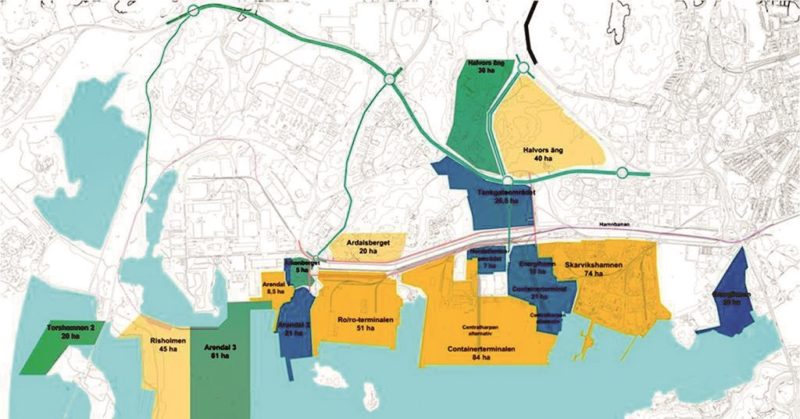
HISTORY OF PORT OF GOTHENBURG
The Port of Gothenburg was founded in 1620 and celebrated its 400th Anniversary in 2020 with many celebratory key events that lasted for several months. The city fathers wished to be free from the extortionate taxes levied on Swedish ships by the Danes. The first harbour was dug out of the Stora Hamnkanalen (Grand Canal) in the 1620s on the south side of the river. However, most ships were forced to anchor further down the river beyond Klippan or at Gamla Varvet, now Stigbergskajen, due to the very shallow water. The goods were transhipped into barges and transported to Stora, and to other storage yards in Majorna or to quays further up the river. Exports were chiefly grain, timber and iron, but the town was destroyed nine times by fire between 1669 and 1804, so that little of the original canal system and its wooden warehouses remained.
The harbour is the soul of the city, and was founded by Gustav Adolf with a square named after him. The first town was built by King Carl IX on Hisingen island, but this was destroyed in 1611 by Danes and Norsemen. The Kronhuset was built in 1643 as an armoury but was converted in a House of Parliament when King Carl XI was sworn in after his father King Carl X had died. The Rashuset (Town Hall) was built in 1672, and the Stadshuset (City Hall) in 1758 as an armoury, gatehouse and barracks. The squat little forts of Skanen Lejonet and Skansen Kronan are picturesque buildings topped by a black lion and a golden crown respectively.
The city was built on a bed of clay 400 feet in thickness, and is the reason why there are no high-rise buildings in the city as the ground is unsuitable, and the large Kungsparken (King’s Park) occupies much of the city area. The large fortress of Nya Alvsborgs Fastning was built on an island in the mouth of the Gota in the later 17th century, three kilometres from the city, in order to protect the western gateway into Sweden against the Danes. It was twice damaged by fire in 1717 and 1719 by the Danish fleet led by Peter Tordenskold, but today it is a peaceful venue for meetings, weddings in the chapel, and banquets. It is reached in summer by boat tours four times daily from Lille Bommen (Lookout Tower).
The Swedish East India Company was founded in 1731 by a Royal Charter that conferred the company certain privileges, including the right to all of the Swedish trade and shipping east of the Cape of Good Hope, and a stipulation that all voyages should start and finish in Gothenburg. The company imported a wide range of goods from China including spices, silks, tea, porcelain, lacquer work treasures and boxes. The company survived the loss of the East Indiaman Gothenburg, launched in 1738, whose seafarers all survived when their ship sank off the harbour at Gothenburg on 12th September 1745 on a homeward voyage. All of the trading eventually proved successful and trade with India and the Far East continued until the company was closed down in 1813.
In the middle of the 19th century, ships began to grow in size, and were powered by steam compound engines and later by triple expansion steam engines, and aided by tugs they could berth at new quays on the south side of the river. The first new quay was the Stenpiren when completed in 1845, and the Masthuggs quay was built between 1888 and 1902 along with many other new quays. The approach channel was dredged to a depth of seven metres and many rail tracks ran along the quays to and from the hinterland. Expansion across the river was necessary and construction of the Sannegards harbour began in 1908 and was completed in 1914. The main cargo was the import of coal and coke, but much later when the changeover to oil powered machinery made coal redundant, the Sannegards harbour was used to discharge and load general cargo for European ports. After the harbour closed, the area was used to build a residential estate.
The Port of Gothenburg saw much emigration to America with one million Swedes leaving, either by coastal liners to Hull and then a rail journey to Liverpool to board a deep sea liner for New York. Alternatively, the new Swedish America Line founded in 1914 provided a direct service to New York, and was greatly helped by the neutrality of Sweden during World War I, when German shipping services ceased. The first ship of the new company was Stockholm, the former Potsdam of 1899 purchased from Holland America Line in 1915, followed by Drottningholm, the former Virginian purchased in 1920 from Canadian Pacific. The ships sailed from the quay at the Stigsbergskajen, a dock of length 1,627 feet on the south bank, and a three-storey building constructed in 1912, which became one of the landmarks of Gothenburg until the line closed down in 1975. The building was also the Head Office of the Port Authority of Gothenburg, and was revived in 2018 as the new America Cruise Terminal.
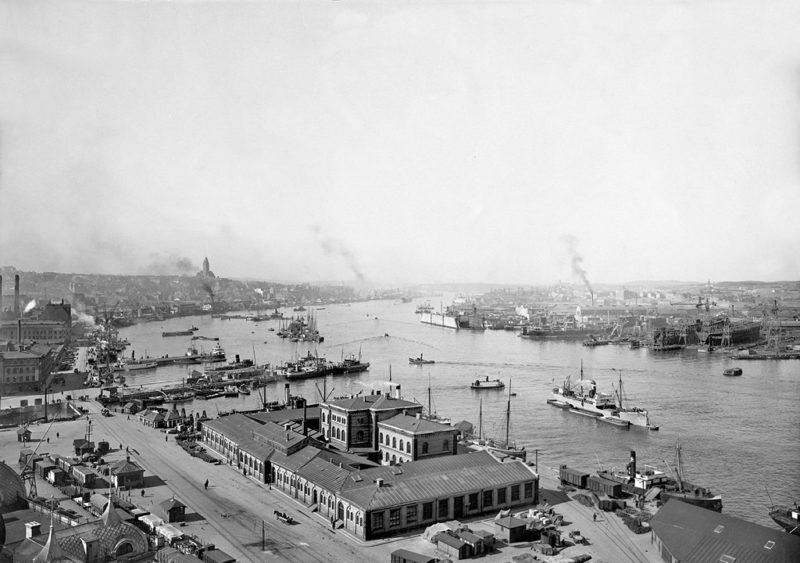
The passenger liner Gripsholm was the first diesel powered liner in the world in 1925 and was followed by a near sister in Kungsholm in 1928, and Stockholm (2) was launched at Monfalcone in Italy in 1938, but was destroyed by fire before completion, while Stockholm (3) never sailed for Swedish America Line in 1940 as she was taken over by the Italian Government as a troopship, renamed Sabaudia and was bombed and sunk by British planes at Trieste in 1944. Stockholm (4) was completed in 1948 and went down in the annals of maritime history when she collided in thick fog with and sank the Italia Line Andrea Doria on 25th July 1956. Too much reliance was placed on radar by the navigating officers of both ships, and not enough care in listening to the foghorns of both ships to ascertain the actual positions of both ships prior to the collision.
Swedish people are the biggest consumers of bananas in the world at around twenty kilos per person per year. The Port of Gothenburg began importing bananas in March 1909 when the Banana Company A/B was formed, shortly changing its name to A/B Banan-Kompaniet. The first consignment was ruined by frost, but soon the Swedish people acquired the taste of this fruit, with imports in 1930 being 10,418 tons. The banana boats owned by Salen Shipping and Johnson Line and other shipping companies unloaded at the Free Harbour (Frihamnen) for almost one hundred years until bananas began to be transported in reefer containers and their handling was transferred to Gothenburg Container Terminal in Millennium year. The last banana boat arrived in the Port of Gothenburg in 2013, marking the end of a much-loved tradition.
Gothenburg harbour was home to three very large shipyards over a period of 150 years:-
- Gotaverken A/B was founded in 1841 and during the inter-war years from 1920 to 1939 it had the largest launched output of any yard in the world in terms of gross registered tonnage. It could build ships up to 725 feet in length on five slipways, and had three floating docks for ships up to 200,000 dwt in Number I of 425 feet by 82 feet with a lift capacity of 8,000 tons, Number 2 of 595 feet by 82 feet with a lift capacity of 18,000 tons, and Number 3 of 715 feet by 100 feet with a lift capacity of 28,000 tons. The famous Gotaverken oil engines were built to their own design up to a works capacity of 250,000 bhp per year. A completely new shipyard was completed by Gotaverken A/B in 1963 at Arendal, 1.25 miles north east of the Tors Harbour oil port. All of the prefabrication was done indoors in large shops after the old Gotaverken city yard was closed down in 1968, but the city yard survived for shiprepair and engine building under licence from B & W until it was closed in 2000. It was then sold to Damen Shipyards for tug building until it was eventually closed in 2015. The last ship built by the Arendal yard was the Swedish icebreaker Oden in 1989.
- Eriksberg A/B was founded in 1915 and soon turned into a major shipbuilding and shiprepair yard owned by the Gothenburg shipowner Dan Brostrom, owner of major Swedish fleets of ships. During the 1950s and 1960s, the Eriksberg yard was the most profitable yard in the country, but competition from Japanese and South Korean yards by 1969 was intensifying. The situation got a lot worse for its four building berths able to build ships up to 900 feet in length, and a big building dock, as well as repair work for Number 1 Floating Dock of lift capacity 1,500 tonnes, Number 2 Floating Dock of lift capacity 7,500 tons, and Number 3 Floating Dock of lift capacity 23,500 tons. The Eriksberg engine works produced 150,000 bhp of diesel engines per year under licence from B & W and Doxford. The yard finally closed down in 1979, and today it is a modern complex of concerts, exhibitions and music halls, with also a replica of the Swedish East Indiaman Gothenburg that sank in 1745 off Gothenburg on a return voyage.
- Lindholmens Varv A/B had a history dating back to the mid 1850s and it expanded quickly with the addition of an engineering works producing compound and triple expansion steam engines. Ships up to 630 feet in length were built on three berths with a maximum output of 60,000 tons of ships per year. It had a graving dock of 590 feet by 79 feet, and a floating dock of 265 feet by 69 feet, and could build steam reciprocating machinery up to 10,000 horse power, and diesel engines up to 30,000 bhp. The yard had a big workforce of 1,800 employees in 1960, but a big loss was made on a ferry for the route to the U.K. from Sweden in 1969, and two years later the yard was sold to Eriksberg A/B, which moved most of its valuable skilled workforce to its own yard. The site of the yard was eventually turned into a leading centre of science focussing on digital communication in the Lindholmen Science Park and the Gothenburg Film Studio.
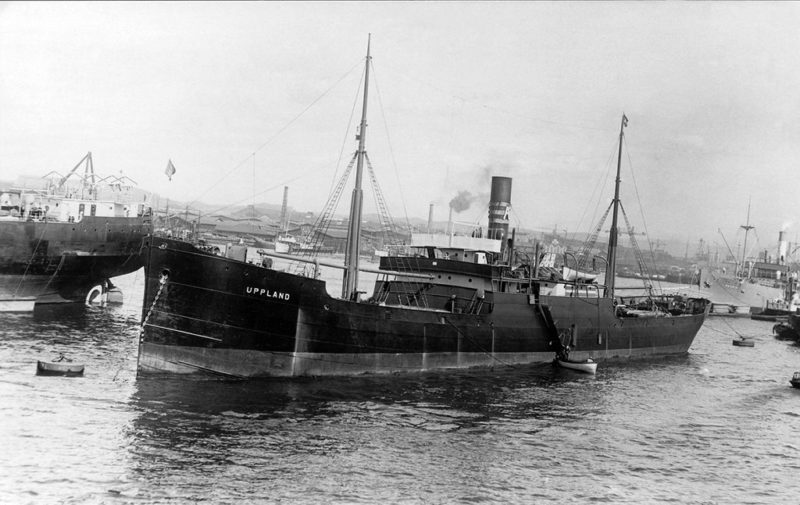
The Frihamnen (Free Port) was officially opened in 1922 where goods could be unloaded free of customs and VAT duties before they left the gates of the harbour. It was located on the north bank of the river, immediately west of the northern abutment of the Gota Alv bridge.
The three quays of Norra Piren, Sodra Piren and Kville Piren had many sheds and warehouses to store imported goods, with bananas unloaded here for many years. The quays were closed in 2017 in order to build a new residential district.
The Rya Oil Port was built at the beginning of the Depression in the 1930s, but imports of oil remained low at 7,500 tons per year until 1957 when the new Skarviks Oil Port was completed with two oil berths and with a third berth added in 1965.
The Tors Oil Port opened in the deep water outside the harbour in 1967 located on Rivo Fjord at Hjartholmen on two islands.
In 1967, oil imports at Gothenburg reached 11.057 million tons as the Tors Oil Port could unload crude oil from tankers of 90,000 dwt.
During World War II, trade fell off as ports were closed to most traffic coming through the Skaggerak and Kattegat due to German patrols of the sea lanes.
The three Gothenburg shipyards launched and completed ships for the Swedish flag, but they were laid up until the end of the war. Sweden was neutral during the war, but there was always the fear that Germany might invade, and plans were made to blow up the Gota Alv Bridge linking the two sides of the harbour and thus block the entrance to the port. Two prisoner exchanges were made during the war, by the liners Drottningholm and Gripsholm of Swedish America Line when they docked at the Free Port.
The liners were chartered by the U.S. Government for the exchange of prisoners of war, diplomats and other civil internees. The liners were granted international safe passage and voyages with the hulls adorned by the Swedish flag and with navigation lights switched on.
Lundby Harbour was completed in 1951 for general cargo handling, and had many warehouses and bonded storage areas for every type of cargo from around the world. The harbour closed in 1989 and a residential estate was built, as well as the Chalmers University of Technology Department of Shipping and Maritime Technology with special research into better navigation at sea by the correct use of radar allied to good visual observation at all times.
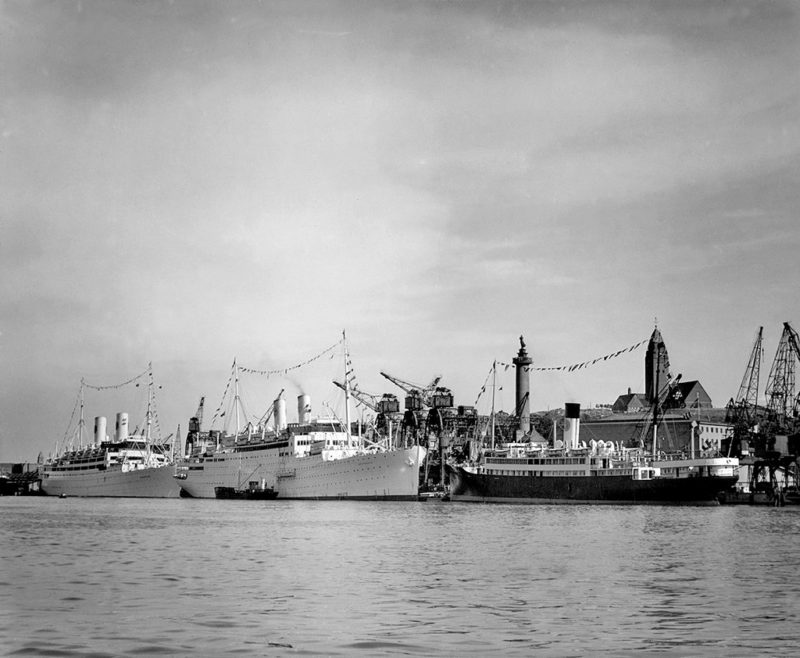
The Skandia Harbour was opened in 1966 with new much longer quays to keep pace with the fast-rising Swedish economy of the 1960s. it was created by enclosing and filling in 1.3 million square metres of Alvsborg Fjord and had been planned for a long time since early post-war years. Although not planned as a container port, this was what it was equipped for with several large gantry cranes, many straddle carriers, and many reach stackers. Today, it has increased in size with several berths around three sides of the container port, and is the largest container port in Scandinavia with around 60% of the Swedish container market. The export and import of wheeled traffic of cars, trucks and heavy project cargo of all sizes is also accepted.
The Alvsborg Harbour was the next stage of development of the Port of Gothenburg in the 1970s and is located immediately to the west of Skandia Container Port.
This harbour has exclusively operated ro-ro traffic since its opening in 1978, with several quays equipped with ramps but no cranes as all cargo is driven or towed onboard. Volvo Cars is a major customer, along with exports of timber, timber products, paper rolls, steel, machinery, tools, ball bearings, glass, project cargo e.g. wind turbine sections, and foodstuffs and general cargo. Some 644,000 tonnes of ro-ro cargo was handled in 2006 by the Port of Gothenburg, which is part of the publicly owned City of Gothenburg.
The port receives no financial support from the City of Gothenburg and is entirely self-financing. The Port of Gothenburg has a registered owner of Stadshus A/B as the parent company for commercial port handling.
Disaster struck the port on 26th August 1979 when the white hulled, Italian built DFDS ferry Winston Churchill, built in 1967, struck the rocks on the outermost island Vinga while on a return voyage to the Tyne with passengers after they had spent a pleasant touring holiday in Sweden with their cars. However, she sustained severe bottom damage in the three days it took to tow her off the rocks and into the Lindholmens yard for inspection.
The passengers were evacuated, but the car deck had been completely inundated with seawater and oil, and all 180 cars were written off, including that of my friend John Hill and his wife Ella. The car was brand new and only three weeks old when it was lost together with their luggage. A cheque from the insurance company of DFDS was all that they ever received.
The ferry was repaired over the winter at the yard of Frederikshavn Vaerft A/S and was back in service on 24th March 1980. The 1980 summer season was her last on the Tyne to Gothenburg route.
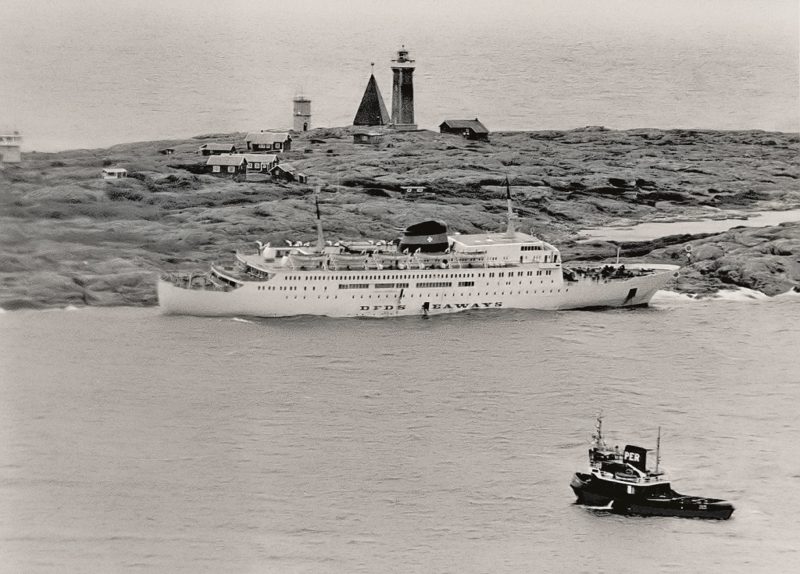
PORT OF GOTHENBURG QUAYS AND BERTHS
The Port of Gothenburg in 1978 was divided into a large number of sections or harbours on both the North and South sides of the river.
These were on the Norra (North) Shore:-
- Tors Oil Port of length 2,070 feet, alongside depth of 20.5 metres and with two berths 800 and 801 opened in 1967.
- Arendal Harbour opened in 1978 of dock length 1,480 feet, alongside depth of 8.0 metres, with four berths 750, 750A, 751 and 752.
- Alvsborg Harbour of dock length 4,088 feet opened in 1978, alongside depth up to 11.0 metres, with 7 berths numbered 700, 701, 702, 710, 711, 712 and 713.
- Skandia Harbour of dock length 7,200 feet opened in 1966, alongside depth up to 14.2 metres for vessels up to 400 metres in length and a loaded draft of 13.5 metres. The harbour has thirteen berths numbered 600, 601, 610, 611, 612, 613, 614, 615, 640, 641, 642, 643 and 644, with the stipulation that no vessel with a beam of greater than 30 metres should be moored at berth 644 when a vessel is arriving or sailing from berth 643 with assistance from tugs. When a vessel is sailing from berth 643 without tug assistance, all loading and unloading at berth 644 must be stopped. Containers, steel, paper rolls, project cargo and general cargo are handled at Skandia Container Port.
- Skarviks Oil Port of dock length 5,682 feet opened in 1957, alongside depth up to 13.0 metres, with 16 berths 506, 507, 508, 509, 510, 511, 512, 513, 514, 515, 516, 517, 518, 519, 520, and 521, as well as berth 644 for the handling of bitumen cargoes.
- Rya Oil Port of dock length of 4,183 feet opened in the early 1930s, alongside depth of up to 9.5 metres, with five berths 551, 555, and 556A, 556B and 556C.
- Sannegards Harbour of dock length 2,920 feet, alongside depth of up to 7.5 metres for berth numbers 138 to 148. Four sheds of a total of 8,000m2 served by 18 cranes.
- Lindholms Harbour of dock length 2,979 feet, alongside depth of up to 9.0 metres for berths 174 to 185. Warehouses of 32,000m2 served by19 cranes, with berth 177 reserved for the port’s floating cranes.
- Lundby Harbour opened in 1951 of dock length 2,230 feet, alongside depth of up to 8.0 metres for berths 119 to 123 with ro-ro facilities at berth 119, and warehouses of 12,400m2 served by 16 electric cranes.
- Free Port (Frihamnen) opened in 1922 of dock length 6,355 feet, alongside depth of up to 9.5 metres for berths 101 to 114, warehouses of 70,000m2 served by 29 cranes. A Cold Store for bananas and fruit brought in by Salen Shipping and Johnson Line and other reefers.
- Ringon Harbour of dock length 640 feet, alongside depths of up to 3.0 metres for berths 300 and 302, served by two electric cranes.
- Kvamen Tre Lejon Old Dock of length 1,020 feet, alongside depth up to 9.0 metres.
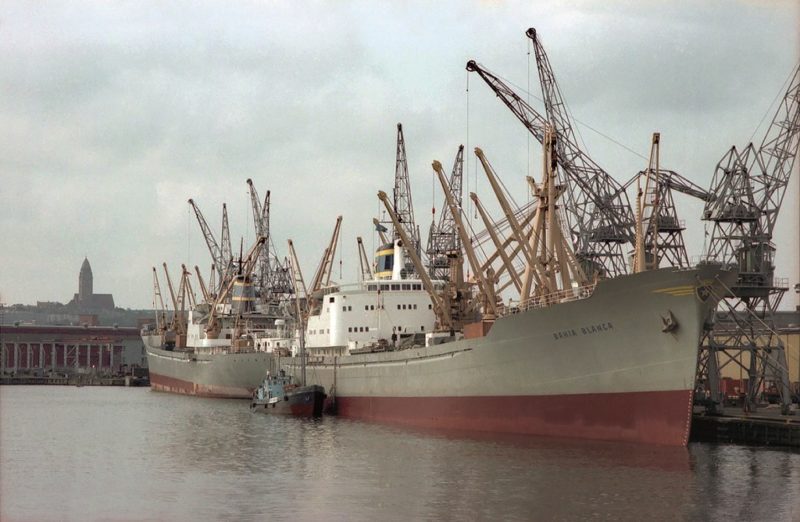
The Sodra (South) side of the harbour had many older berths, as well as the very busy Stena Line ferry port at Masthuggs Quay, as follows:-
- Alvnabbens Old Oil Port
- Tanguddens Harbour
- Nya Varvet Old Dock
- Carnegie Quay of length 738 feet, alongside depth of up to 7.5 metres
- Klippan Old Quay
- Majnabbe Harbour of length 1,581 feet, alongside depth up to 8.0 metres
- Varvet Kusten Old Quay
- Gothenburg Fish Harbour
- Gamla Varvet Old Quay
- Stigbergs Quay of length 1,627 feet, alongside depth of up to 9.0 metres
- Masthuggs Quay of length 3,041 feet, alongside depth of up to 7.6 metres for the twin ro-ro ramps of the busy Stena Line ferry port
- Skeppsbron Quay of length 490 feet, alongside depth up to 3.0 metres
- Stora Old Harbour (Grand Canal) used by Swedish East India Company to store their wealth of goods in buildings along the canal
- Packhus Quay of length 750 feet, alongside depth of up to 3.0 metres
- Little Bommen (Lookout Tower) Harbour
- Gullbergs Quay of length 4,245 feet, alongside depth of up to 5.8 metres
- Gas Works Quay for the import of gas coal, length 837 feet, alongside depth of 5.8 metres
- Larje Old Harbour of length 1,020 feet, alongside depth up to 5.3 metres
- Rosenlunds Old Canal
CRUISE SHIP TERMINALS AND BERTHS
There are two cruise ship terminals in the port and two long quays for cruise ships to berth when four cruise ships are scheduled to arrive on the same day.
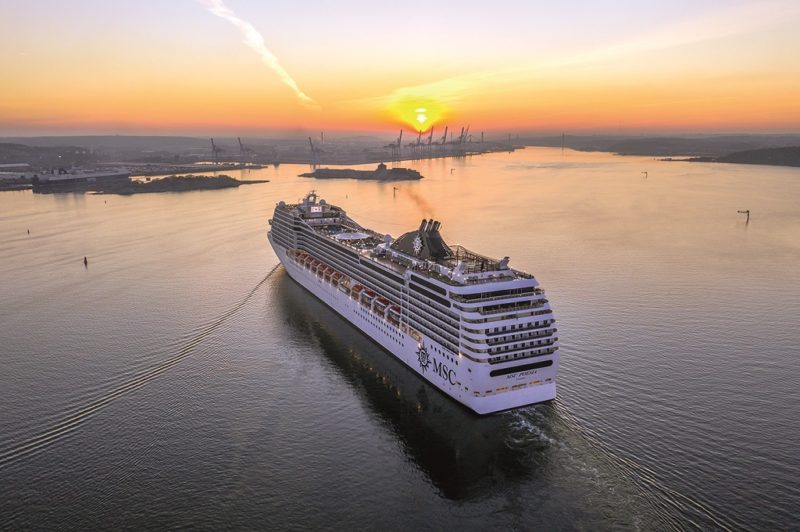
AMERICA CRUISE TERMINAL
In 1975 the last Swedish America Line passenger liners and cruise ships departed from this iconic 1912 built three storey terminal. It was built as the Head Office of the Port of Gothenburg and became one of the landmarks of Gothenburg harbour, and was revived in 2018 to be the main America Cruise Terminal of the port. The terminal is on the south side of the harbour within easy reach of the centre of Gothenburg and walking distance of the cultural districts of Linne, Haga and Jarntorget. The terminal is only a few hundred yards away from the busy Stena Line ferry terminal at Masthuggs as well as the Majorna areas of considerable historical and cultural significance.
The Reception Hall of length 220 metres is very welcoming to international cruise ship passengers. with a tourist information desk, souvenir shop, free wi-fi, disabled facilities, taxi stand, and many restaurants and cafes. The estimated time from picketing up the pilot in the island strewn approach channel to docking at America Cruise Terminal is two hours. The alongside depth at mean water is 8.0 metres, and the terminal quay is 2.5 metres above the harbour water level.
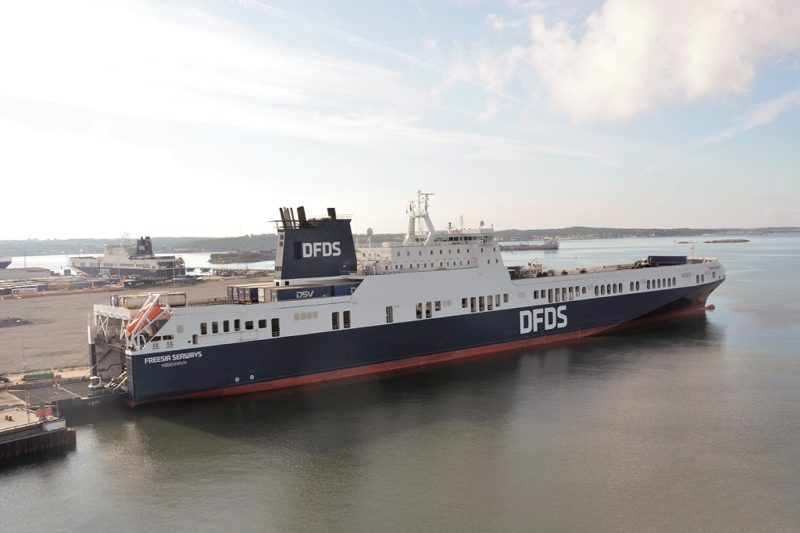
ARENDAL CRUISE TERMINAL
Arendal Cruise Terminal was opened to share the cruise passenger trade with a terminal in the Free Port (Frihamnen) until that terminal closed in 2014 after 70 cruise ships had visited the port that year. The Arendal Cruise Terminal has a passenger lounge and reception hall, and all of the facilities expected of a cruise ship terminal.
There are cafeterias and souvenir shops selling tourist items and postcards, free wi-fi, taxi stand and one or two larger shops for more expensive items, with the distance by shuttle coach into the centre of Gothenburg of twenty minutes. The very interesting Volvo Museum of 6,000m2 in area is located next to the cruise terminal. The cruise terminal berth is of 300 metres in length, with an alongside depth of 9.5 metres, quay height of 3.5 metres above the harbour water level, and the estimated time from picking up the pilot offshore to being able to go ashore is 1.5 hours.
CRUISE LINES CALLING IN 2022
- Aida Cruises . . . . . . . … . . . . . . . 25
- TUI Cruises . . . . . . . . . . . . . . . . . 6
- Le Ponant Cruises . . . . .. . . . . . . 5
- Phoenix Seereisen . . . . . .. . . . . . 4
- Seabourn Cruises . . . . . . . . . .. . 4
- Regent Seven Seas Cruises . . . . 4
- Oceania Cruises . . . . . . . . . . . . . 4
- Transocean Cruises . . . . . . . . . . 3
- Holland America Line . . . . . . . . 3
- Mystic Cruises . . . . . . . . . . . . . . 3
- Saga Cruises . . . . . . . . . . . . . . . . 2
- P.& O. Cruises . . . . . . . . . . . . .. . 2
- Princess Cruises . . . . . . . . . . . . . 2
- Vantage Cruise Line . . . . . . . . . . 2
- Majestic Intl Cruises . . . . . . . . . . 2
- Norwegian Cruise Line . . . . . . . . 2
- Fred. Olsen Cruises . . . . . . . . . . . 2
- Hanseatic Cruises . . . . . . . . . . . . 1
- MSC Cruises . . . . . . . . . . . . . . . . .1
- Noble Caledonia . . . . . . . . . . . . . .1
- Hapag-Lloyd Cruises . . . . . . . . . . 1
- La Mascarade Cruises . . . . . . . . . 1
- Disney Line Cruises . . . . . . . . . . .1
- Silversea Cruises . . . . . . . . . . . . . 1
- Cunard Line . . . . . . . . . . . . . . . . . 1
- Carnival Cruises . . . . . . . . . . . . . .1
- Viking Ocean Cruises . . . . . . . . . .1
- TOTAL CRUISE CALLS . . . . . 85
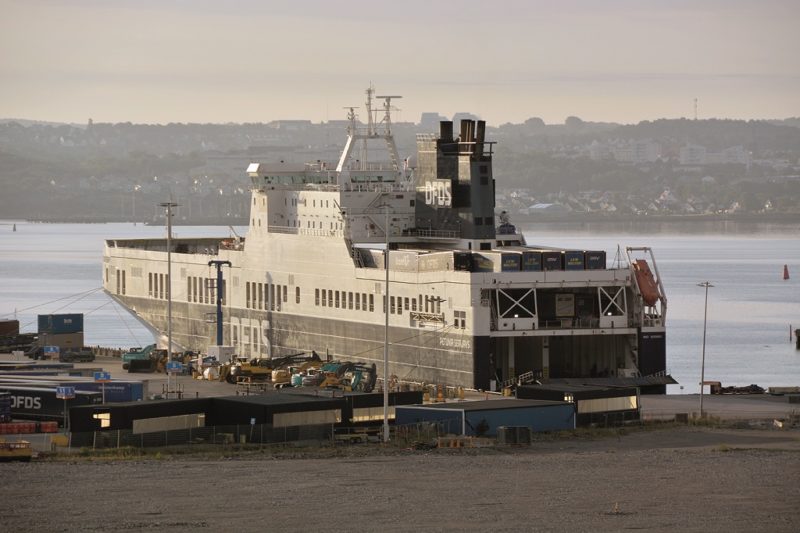
CARGO AND FREIGHT TERMINALS – APM TERMINALS
The Gothenburg Container Terminal of APM Terminals (Maersk Line) is the largest container terminal in Scandinavia. The terminal handles 60% of the total container trade of Sweden, and offers the widest range of services to be found in the Baltic, and has the capacity to handle the biggest Maersk Line ‘Triple E’ class vessels. The Port of Scandinavia handled 860,000 TEU of containers in 2013, rising to 872,000 TEU in 2019. The terminal covers 80 hectares of land, and handles container ships up to 19,000 TEU capacity, with three container trains of length 750 metres handled at the same time at the terminal. The estimated time from the pilot boarding a large container ship to the berthing at the terminal is one hour and a half.
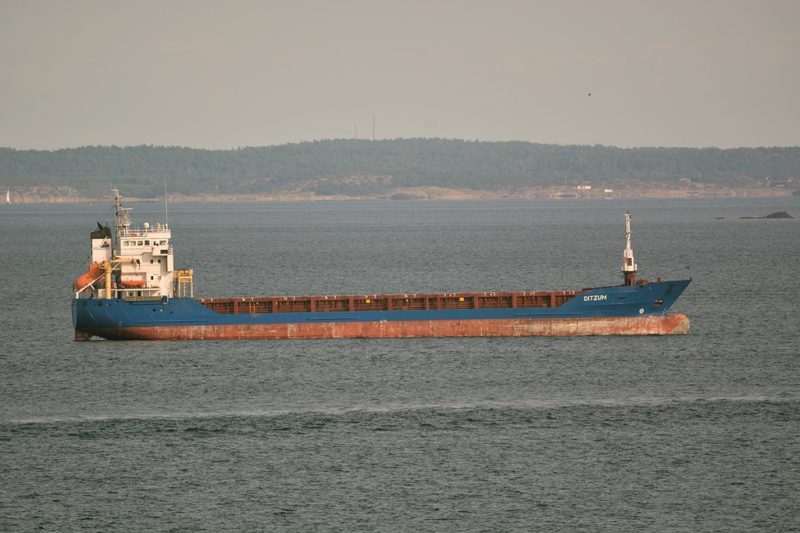
GOTHENBURG RO-RO TERMINAL
This large ro-ro terminal handles cars, trucks, trailers, containers, forestry products, project cargo and all forms of wheeled ro-ro cargo for a range of services to ports all across the European continent and to Great Britain. There are 80 ro-ro calls per week at the port with daily services to Denmark, Norway, Belgium and the UK, and weekly services to North America, Southern Europe, Middle East, India and the Far East. The Volvo car factory at Gothenburg provides most of the exported vehicles. There is a special heavy lift quay at Gothenburg Ro-Ro Terminal, and a Container Freight Station prepares container, ro-ro and break-bulk general cargo for export shipment. Forestry products are shipped from here to all of Europe, North Africa, North America, the Middle East and the Far East. Break-bulk general cargo can be handled at any one of six terminals and quays in the port.
The Arken Inter-Modal Terminal has recently opened adjacent to the Gothenburg Ro-Ro Terminal of 65,000m2 in area. This new terminal is used for the rail shipment of containers imported or exported from its neighbour into or out of the hinterland of Sweden.

There are seven railway lines from the Arken Inter-Modal Terminal running many daily rail services to over 30 railheads in Norway and Sweden, with a total track length of 3,360 metres and the ability to handle 90,000 containers and trailers per year at this new terminal.
LOGENT PORTS AND TERMINALS
This large ro-ro terminal imports and exports cars, trucks and all types of ro-ro cargo, with direct services to the Middle East, Far East, North America as well as frequent ro-ro traffic to Zeebrugge, the Humber and the Tees.
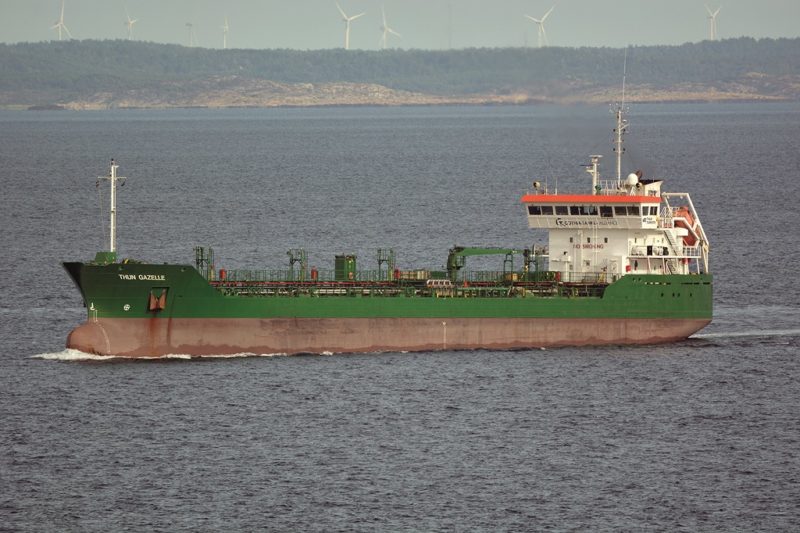
GOTHENBURG LOGISTICS PARK
One million square metres of logistical and warehouse space in the biggest rail cargo port in Sweden, with 25 inter-modal trains arriving and leaving daily to all parts of Sweden and Norway. There are 130 direct shipping lines to the rest of the world, with 70% of the foreign trade of Sweden handled by shipping using this rail logistics park.
PREEMRAFT OIL REFINERY
Preemraft Gothenburg have the capacity to refine six million tonnes of crude oil per year, with Preem gasoline and Preem evolution diesel produced here, the latter developed in Sweden as a special high octane fuel. Some 2,500 tankers per year call at the many oil berths at Tor, Skarsvik and Rya Oil Ports with around 24 million tonnes of crude oil, petrol, diesel and heavy fuel oil and petrochemicals handled. The transhipment trade of crude oil is large, and crude oil is also stored in huge tanks and caverns underground, giving a total of 4 million cubic metres of storage capacity. There are two dozen dedicated tanker berths with alongside depths of up to 19.0 metres to handle the huge oil trade of the port.
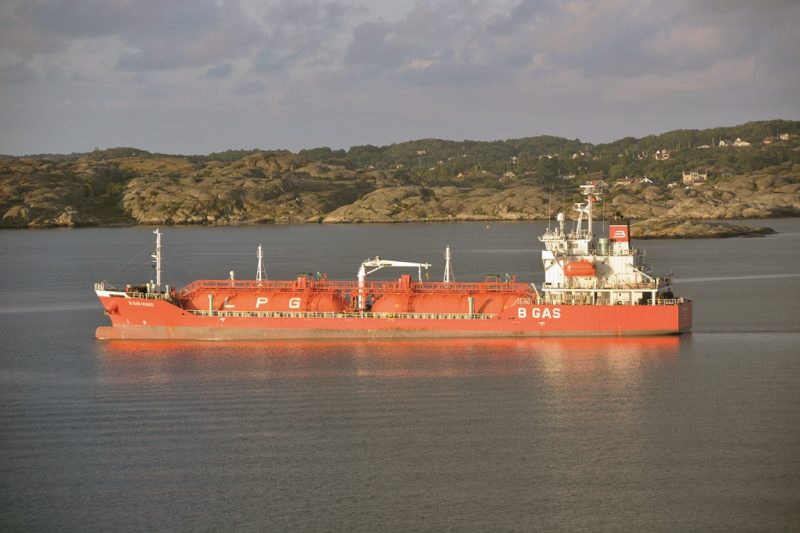
ST1 OIL REFINERY
A Finnish petrol station chain has developed into a major Nordic energy group in a few short decades. The ST1 Refinery refines four million tonnes of crude oil per year to produce oil products that include gasoline, kerosene, LPG butane and propane, diesel oil and heavy fuel oil, all with low sulphur content.
NYNAS OIL REFINERY
This Swedish owned oil refinery is located near the Port of Gothenburg, with a yearly throughput of half a million tonnes of crude oil per year, and is distilled into bitumen for use in asphalt and road surfaces as well as other distillates. The total amount of crude oil imported at the port in 2013 was 22.212 million tonnes rising to 23.700 million tonnes in 2016 and 24.200 million tonnes in 2019.
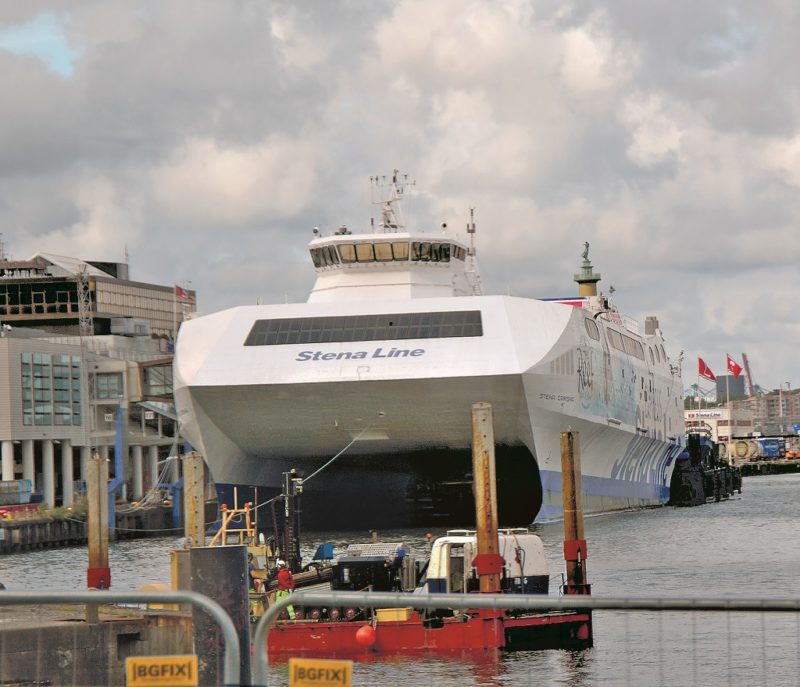
CARBON CAPTURE SYSTEMS (CCS)
The oil companies of Preem, ST1, Renova, Goteborg Energy, Nordion Energy and the Port of Gothenburg are collaborating to produce storage solutions for 1.5 million tonnes of captured liquid carbon dioxide per year. The CinfraCap project completed its design stages in October 2022 into carbon capture from carbon emission points at Gothenburg oil refineries and waste incineration plants. Liquid CO2 will be loaded onto tankers at the new CinfraCap energy terminal.
BERGSLAGERNAS JARNVAGAR
This privately owned rail company in Sweden has 478 kilometres of rail track to the Port of Gothenburg from Falun. The company was founded in the 1870s to form a transportation system for iron ore from the Bergslagen iron ore field in Southern Sweden, and uses the Swedish standard rail gauge. There are also two dozen daily rail shuttles operating to other cities in Norway and Sweden from the Port of Gothenburg.
The annual port statistics over the five years from 2015 to 2019 by weight in millions of tonnes are now given:-
2015 2016 2017 2018 2019
Oil, gas, chemicals
21.100 23.700 23.500 23.400 24.200
General cargo
3.820 4.090 4.080 4.050 4.890
Ro-Ro cargo
5.488 5.380 5.750 5.849 5.510
Containers by weight
2.460 2.394 1.920 2.259 2.616
TOTALS
32.868 35.564 35.250 35.558 37.216
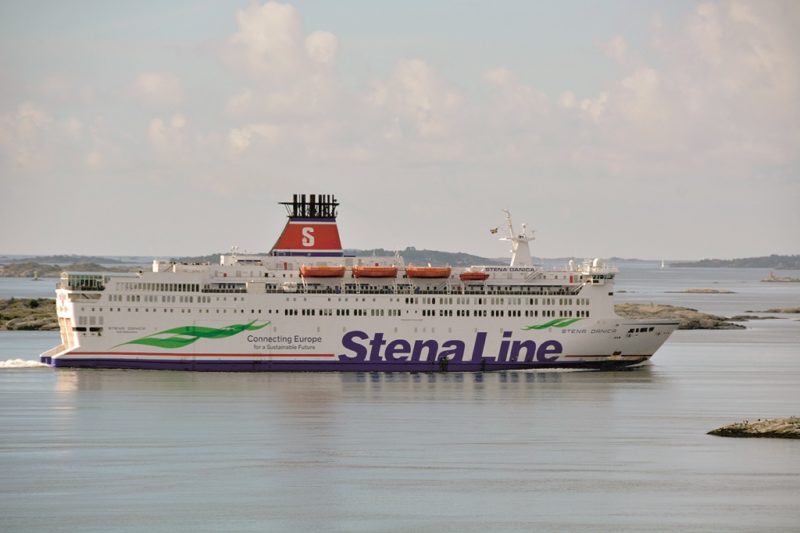
SKANDIA GATEWAY PROJECT
The Port of Gothenburg can receive the largest container ships and oil tankers in the world and thus offers direct deep-sea services to all of the continents. From Trubaduren light on the outermost Vinga Island to the Tor Oil Port is eight miles with a depth of 20.6 metres, then from Tor Oil Port to Skarviks Oil Port the fairway is dredged to 13.0 metres, continuing upriver to the Free Port with a depth of 10.0 metres, while further upstream the depth falls to only 6.0 metres. These giant ships are becoming larger by the year, and the approach channels and fairways into the port need to be deepened. The project has been entitled as the Skandia Gateway as the largest container terminal, that of Skandia Harbour, has the greatest need of the deepening work that will increase the depth by four metres. Dredging work will begin at the end of 2023 and take at least three years to complete by 2026/27 to fully dredge the fairways, the Skandia harbour basin and quays. There is no appreciable tidal range in the port.
The limited depth in the fairways means that the largest vessels calling at the Port of Gothenburg arrive only part loaded. The area that needs to be deepened is over five kilometres in length, with total dredged spoil material of 13.5 million cubic metres of rock and clay enough to fill up twenty large football stadiums. A vital part of the deepening work is the reinforcement of quays in the area to allow giant vessels to safely discharge and load. The quay reinforcement work will be carried out by local Gothenburg contractors. Some 285,000m3 of the spoil is contaminated material from shipyards and former docks handling dangerous cargo, and will be deposited in the sea well beyond the outermost island of the many rocky islands in the approach channel, that of Vinga Island, over eight miles from the Port of Gothenburg. Depositing the spoil on land would involve over 14,000 trucks being used on the overcrowded Gothenburg motorway and road system. The location off Vinga has been carefully chosen as it has the least accumulating conditions and sea currents. All necessary permissions have been obtained from the land and sea regulators for the work to begin.
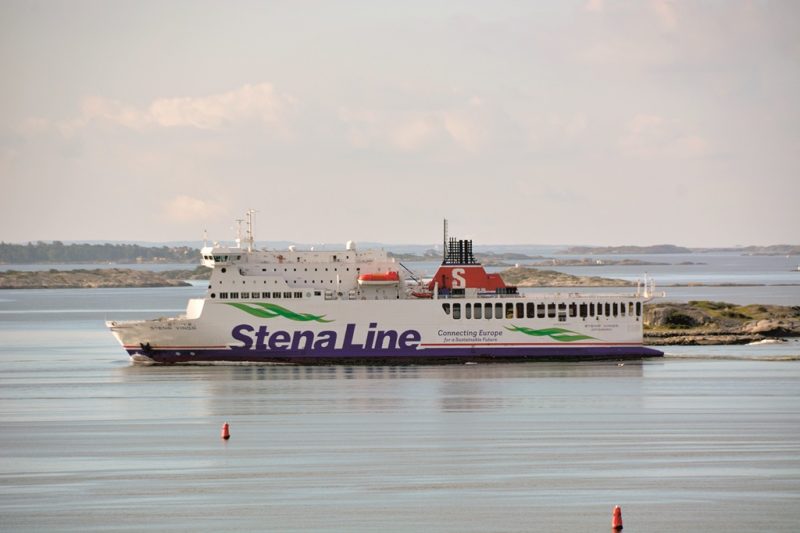
STENA LINE FERRY TERMINALS
Gothenburg is the home of Stena Line, which now has two passenger terminals in the port. The Masthuggs Terminal is for passengers travelling to Frederikshavn in Denmark on the ferries Stena Danica, Stena Jutlandica and Stena Vinga. The terminal is named after the high hill of Masthugget behind the ferry terminal, and the Masthugget Church on the top of the hill near the Gota Alv river. The red and imposing tower of the church is 200 feet in height, and the church was built in the ‘National Romantic’ style of Swedish architecture by designer Sigfrid Ericson. The church has become a much-loved symbol of Gothenburg, and is a popular tourist attraction for visitors.
The second Stena Line ferry terminal in the Port of Gothenburg is for travellers to Kiel in Germany using the ferries Stena Germanica and Stena Scandinavica. This passenger terminal is located further west than Masthuggs on the Gota river close to the Alvsborgbron Bridge. The main E6 motorway that runs close to Gothenburg from either north or south is well signposted to both of these Stena Line passenger terminals.
Stena Line are pleased to have joined forces with the Volvo Group and the Scania Group and the Port of Gothenburg to bring about a 70% reduction in greenhouse carbon emissions by the year 2030 in the Port of Gothenburg. Gothenburg is the largest ferry port in Sweden and celebrations for its 400th anniversary by the port and Stena Line lasted throughout 2021. Stena Line are proud to display ‘Connecting Europe for a Sustainable Future’ on both sides of the hulls of their Ro-pax and Ro-ro ferries as a very commendable green initiative. Strenuous efforts are being made by the Gothenburg City Council to improve the Masthuggkajen area of the city behind the big Stena Line ferry terminal.
The Port of Gothenburg completed the acquisition of 108,000m2 of land at Arendal in June 2022, with the intention to enable future relocation of both of the Stena Line terminals to Denmark and Germany, and to increase the port ferry and ro-ro traffic in the outer port of Arendal. Stena Line will enter into a 25 year lease agreement for the Arendal site by 1st January 2027, and this will considerably reduce the heavy blockage of traffic jams in the city centre.
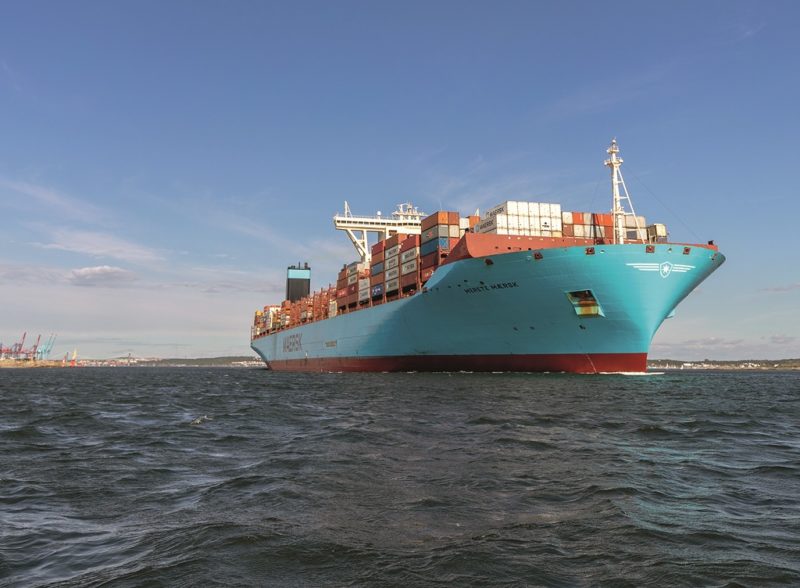
LOCAL FERRY AND TUG FLEETS
Cross river public passenger services have in the past been run by the City of Gothenburg, now replaced by Vasttrafik, an organisation responsible for public passenger transport. Vasttrafik has services all over Vastra Gotaland province, with a huge fleet of 36 small ferries and over two thousand buses, trains and trams. A new electric ferry joined this fleet in 2022, running a direct route across the river. The battery powered electric ferry Alveli has a larger battery system compared with her sister Elvy already in operation, with a total capacity of 1.26 kilowatts and consisting of 120 separate batteries. This allows for seven to eight hours of operation before recharging, and will cut carbon dioxide emissions by over 55% compared to similar ferries running on diesel electric power.
There have also been for decades a Gothenburg to Styrso passenger ferry service, which included the ferries Dan Brostrom, Styrso, Disa and Yiva. Styrso is a small island to the south of Gothenburg harbour with 1,300 inhabitants, whose connection to the port is by regular ferry or by the bridge to the neighbouring island of Donso.
The tug company Roda Bolaget (Red Company) dates from 1872 in Gothenburg due to the red bands on their funnels. They gradually absorbed their smaller competitors, and then in 1890 they took over their largest competitor Bogserings A/B (White Company). In 1918, Brostroms took a controlling interest and the company became Gothenburg Towage & Salvage Co. Ltd. A fleet of fourteen tugs was owned in 1973 under Goteborgs Bogserings & Bargnings A/B, with Dan of 492 grt and built in 1965 as the largest tug. The company was purchased by Svitzer Tugs in 1999, and Roda Bolaget have used the Svitzer livery since 2002, but the tugs have retained their original names. Svitzer has brought in many powerful Danish owned tugs for Svitzer Sverige A/B and are in use in all Swedish ports. Today, the Port of Gothenburg has tug regulations for all ships berthing at the port. Towing and escort functions are compulsory to improve safety, with all loaded tankers over 30,000 dwt taking tugs, while those tankers over 30,000 dwt in ballast and not gas-free are also required to take tugs.
Two further tug fleets and companies have recently arrived in the port, to give a competitive situation with Svitzer Tugs. Boa Tugs of Sweden is based on the island of Tjorn with a fleet of many red hulled tugs and a fireboat, all with fire-fighting ability which can spray up to 40,000 litres of water per minute at fires at any of the three oil terminals and three refineries in the port. These tugs are named below, and Boa also operates offshore supply ships with the names of Boa Bison, Boa Fortune, Boa Magnitor, Boa Mighty, Boa Rover and Boa Jarl, as well as the semi-submersibles Boa Sub C and Boa Deep C. A fleet of eighteen barges is also owned for dredging, deck cargo, heavy lift and other duties.
The third tug fleet in the Port of Gothenburg is Nordane Tugs of Denmark, set up in the 19th century by Thomas Hansen, born in 1851, and with the present company managed by members of the fourth, fifth and sixth generations of the family. These green hulled tugs have the word ‘Stevns’ as a prefix to their names. The company also owns the larger icebreaker Thorbjorn, and the general cargo coaster Stevns Trader. The three tug fleets are:-
- Svitzer Sverige A/B with Svitzer Helios, Svitzer Hymer, Svitzer Oden, Svitzer Mars, Svitzer Mjolner, Svitzer Thor, Svitzer Trym, Svitzer Tyr, Bjorn af Goteborg, Freja af Goteborg, Bob, Bonden, Boss, Chief, Dynan, Bauge, Bure, Sigyn, Skuld and Fenja.
- Boa Tugs A/S with Boa Brage, Boa Heimdal, Boa Balder, Boa Frigg, Boa Galatea, Boa Thalassa, Boa Harek, Boa Siw, Boa Njord and Boa Kark.
- Nordane Tugs A/S with Stevns, Stevns Battler, Stevns Breaker, Stevns Arctic, Stevns Master, Stevns Nerthus, Stevns Ocean, Stevns Guard and Stevns Icecap.
Not all of the above tugs serve at the Port of Gothenburg, but operate in other Swedish and Danish ports, and most are powerful tugs of up to 500 grt and 90 tonnes bollard pull.
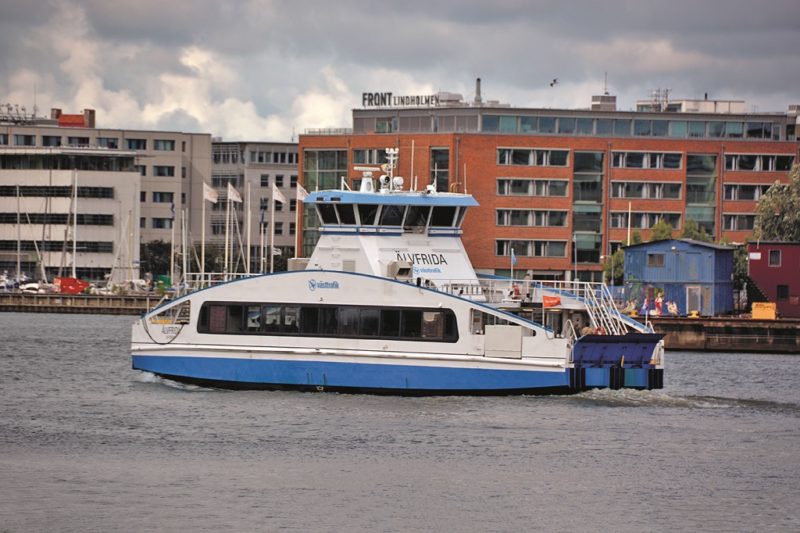
GOTHENBURG MARITIME MUSEUM
In order to explore the Alv Gota harbour fully, it is best to take a ferry from Alvsnabben to Lille Bommen (Lookout Tower), with the majestic Gothenburg Opera House on the waterfront 200 yards west of the Lookout Tower. A neighbour further down the river on the south side at Packhuskajen is the Gothenburg Maritime Museum, which is a floating collection of thirteen vessels including the following:-
- Swedish destroyer Smaland of the ‘Halland’ class built by the Eriksberg yard in 1952 and retired in 1979. The cruisers Tre Kronor and Gota Lejon were the largest ever units of the Swedish Navy, and after their retirement only the ‘Halland’ class remained in service.
- Submarine Nordkaparen of the ‘Draken’ class built in 1962.
- Patrol boat Hugin built in 1978.
- Low draft Monitor Solve built in 1875 to travel up the Gota Alv river into the canal system to defend towns around Lake Vanern.
- Minelayer Kalmarsund currently located at Eriksberg and chartered to the Chalmers University of Technology.
- Cargo ship Fryken currently located at Eriksberg and chartered to the Chalmers University of Technology.
- Lightship Fladen built in 1915 at Stockholm.
- Port ferry Dan Brostrom of 138 grt and built in 1963.
- Tug Storm Princess built in 1908.
- Tug Herkules built at Landskrona in 1939 for Gothenburg use.
All of the floating exhibits can be boarded and inspected, as well as the museum historical artefacts under cover.
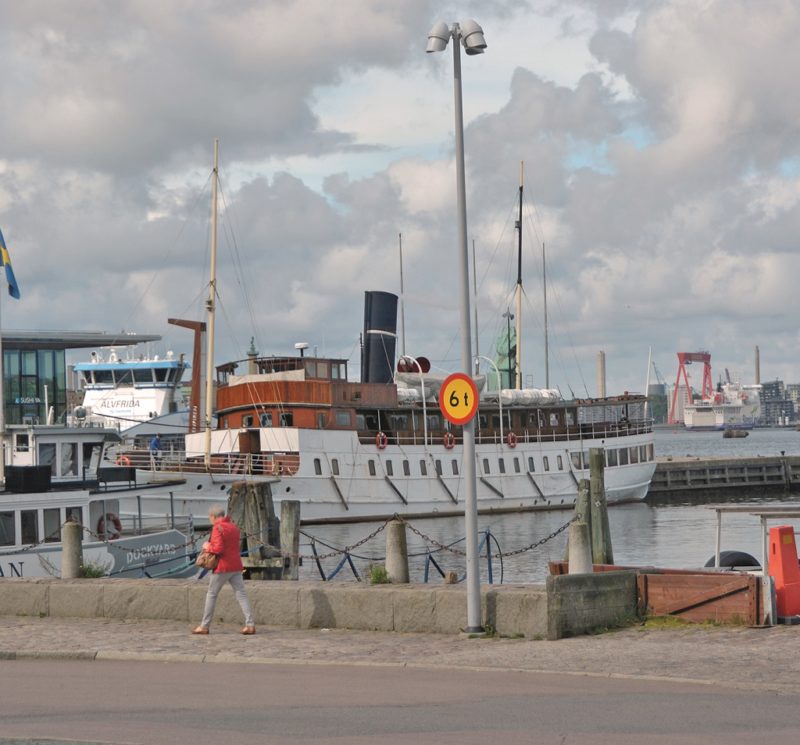
SUMMARY
The Port of Gothenburg has very modern facilities for all of the many types of cargo and specialist ships that arrive in the port. Containers handled in the first six months of 2022 were 5% higher than in the same period of 2021 at 433,000 TEU. Recently, it became the first port in Scandinavia to have public electric charging and ‘green’ hydrogen filling for the huge fleet of heavy goods lorries that operate in the port. Two new terminals are currently in use or under construction. The new transhipment Svea Terminal began construction in April 2019 and was completed exactly a year later. The terminal is of 45,000m2 with 21,600m2 of storage provided in a long metal ‘tent’, with full links to the port rail system for exported general goods. The new Arendal Terminal began construction in late 2018 and will be completed during 2024/25. The site is adjacent and to the west of the current ro-ro terminal at Arendal built in 1978, and with substantial demand having outstripped capacity. The new terminal will be of 140,000m2 with an alongside depth of 12.0 metres. Container and ro-ro units of over 200,000 units per year will be handled and linked to the extensive existing port rail system.
Several small passenger vessels operate cruises along the harbour in summer, and to the Alvsborg Fortress on the harbour islands, as well as longer coastal voyages to islands south of the harbour. The steamer Bohuslan built in 1914 is one of the oldest, while the Paddan cruise boats operate inland trips along the Gothenburg canal system and on the Savean river. The two-deck, larger white hulled tourist cruiser Walona is moored at the Stenpiren, she offers regular cruises in summer to Vinga Island, as well as dinner cruises to other offshore islands, and has a white funnel with three blue bands and a central orange ‘W’.

The port is pioneering the use of clean ‘green’ methanol and LNG bunkering, and shoreside ‘green’ power is now provided for all tankers moored at the three oil ports in the harbour, saving at least 1,815 tonnes of carbon dioxide emissions per year from tanker engines running and polluting the environment. The port bunker tanker is Angon of 1,627 gt and was built in 1997, and Gothenburg University operates the research vessel Skagarak of 390 gt and built in 1968.
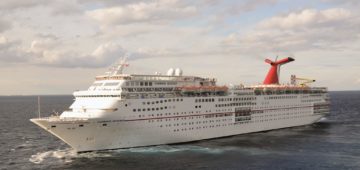



Comments
Sorry, comments are closed for this item